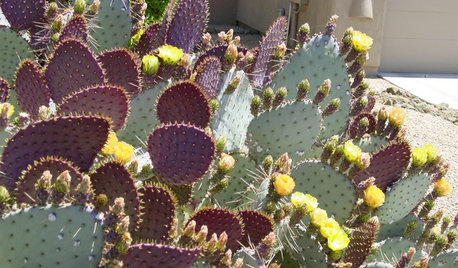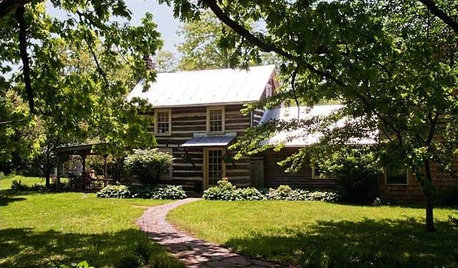Confused about pears
mrs.wiggley
9 years ago
Related Stories

GREEN BUILDINGLet’s Clear Up Some Confusion About Solar Panels
Different panel types do different things. If you want solar energy for your home, get the basics here first
Full Story
GARDENING GUIDESGreat Design Plant: Santa Rita Prickly Pear for Purple Appeal
Distinctive colored pads and yellow flowers make this cactus a favorite in Southwestern gardens
Full Story
GARDENING GUIDESNew Ways to Think About All That Mulch in the Garden
Before you go making a mountain out of a mulch hill, learn the facts about what your plants and soil really want
Full Story
EDIBLE GARDENSHow to Grow Your Own European and Asian Pears
Try these trees for their good looks, delicious fruit and wide range of sizes — plus you can espalier them
Full Story
LIGHTINGWhat to Know About Switching to LED Lightbulbs
If you’ve been thinking about changing over to LEDs but aren't sure how to do it and which to buy, this story is for you
Full Story
GREEN BUILDINGWhat's LEED All About, Anyway?
If you're looking for a sustainable, energy-efficient home, look into LEED certification. Learn about the program and its rating system here
Full Story
WORKING WITH PROS10 Things Decorators Want You to Know About What They Do
They do more than pick pretty colors. Here's what decorators can do for you — and how you can help them
Full Story
FUN HOUZZEverything I Need to Know About Decorating I Learned from Downton Abbey
Mind your manors with these 10 decorating tips from the PBS series, returning on January 5
Full Story
MOST POPULARWhat to Know About Adding a Deck
Want to increase your living space outside? Learn the requirements, costs and other considerations for building a deck
Full StoryMore Discussions









appleseed70
clarkinks
Related Professionals
Belmont Landscape Architects & Landscape Designers · Folsom Landscape Architects & Landscape Designers · Glen Ellyn Landscape Architects & Landscape Designers · Horsham Landscape Architects & Landscape Designers · Middle River Landscape Architects & Landscape Designers · Washington Landscape Architects & Landscape Designers · Edmond Landscape Contractors · Ashburn Landscape Contractors · Burien Landscape Contractors · Canton Landscape Contractors · Fort Mill Landscape Contractors · Harrisburg Landscape Contractors · Riverhead Landscape Contractors · Westchester Landscape Contractors · Kingsburg Landscape Contractorsmrs.wiggleyOriginal Author
fruitnut Z7 4500ft SW TX
clarkinks
mrs.wiggleyOriginal Author
clarkinks
clarkinks